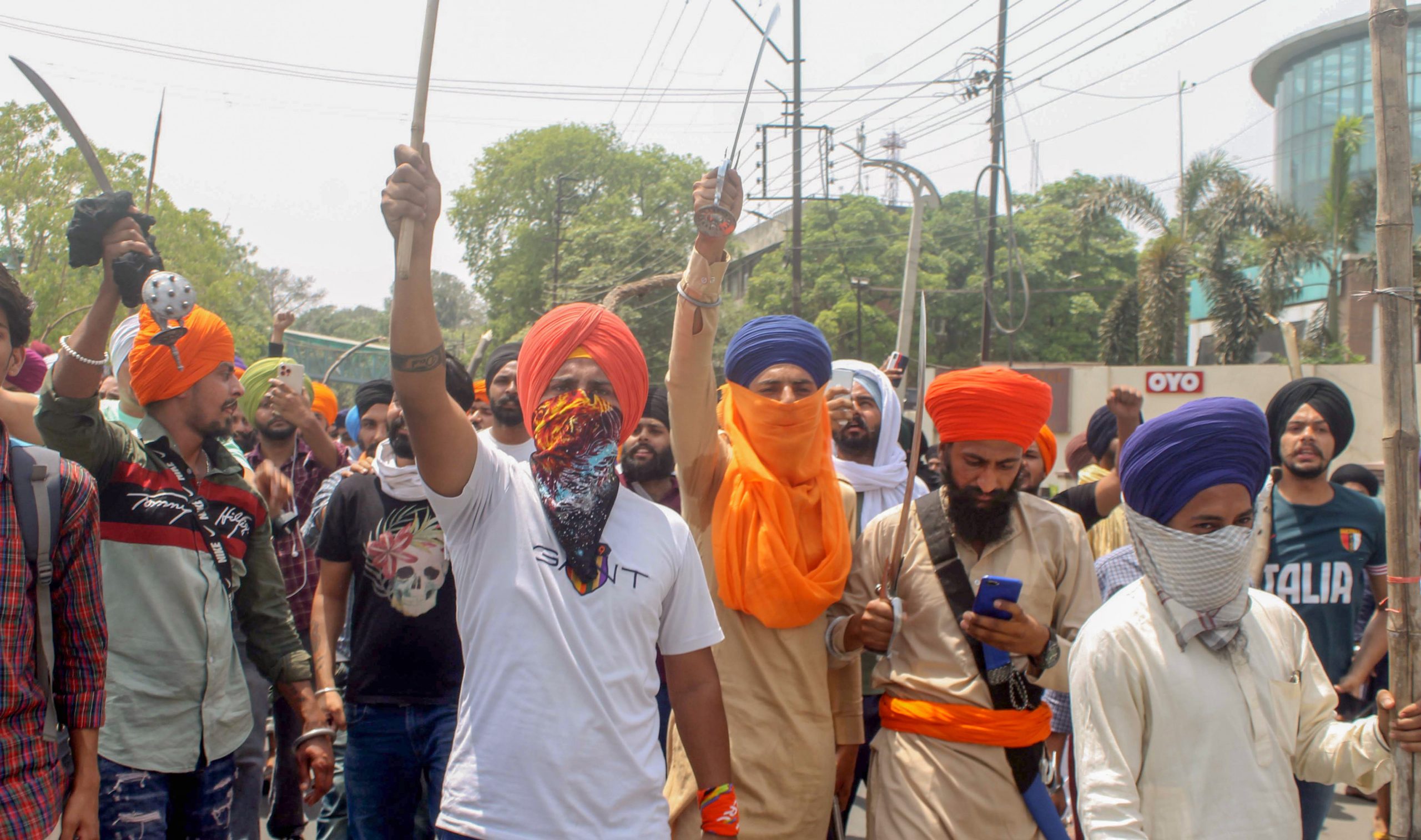The Khalistani movement made its presence felt in the Himachal Pradesh assembly on May 8 when sympathizers of the movement tied several Khalistani flags on the gate and walls.
The incident has set off alarm bells, ringing in the resurrection of a force that appeared to have reduced its presence years ago.
What is the Khalistani movement?
The Khalistani movement is a Sikh political ideology that aims to establish an autonomous state called Khalistan. It was founded by Indian dentist-turned-politician Jagjit Singh Chohan, who relocated to the United Kingdom in 1969 to launch his campaign for the formation of Khalistan.
The movement has a long history in India and currently enjoys support from various quarters of the world due to the Sikh diaspora.
From a grenade attack in Pathankot, a blast in Fazilka’s Jalalabad, a tiffin explosive in Una to an attack on a police station in SBS Nagar, the past year has witnessed several terror acts orchestrated by the secessionist community.
Also Read: Punjab Patiala violence: Communal clash or political skirmish?
The Khalistani organization routinely uploads tweets and videos, welcoming people to join their call for a separate homeland known as Khalistan.
The movement’s uprising in India
While this call began ringing decades ago after the collapse of the British empire in the 1940s, the movement only gained momentum between the 1970s and 1980s. Khalistanis clamoured for a separate country built through the amalgamation of north India, parts of western India, and the Pakistani province of Punjab.
When the movement spread overseas, the Indian government said that “Pakistan armed, trained and to a certain extent financed Sikh militants.”
Also Read: In the making: A South Asian economic crisis?
During the time period, the movement went rampant with protests. However, in 1984, it was suppressed by the Congress government under Prime Minister Indira Gandhi, who then paid the heavy price with her life, after four months.
After events like the Kanishka air crash and the bombing of an Air India airplane over the Atlantic, the Indian government grew wary of the movement.
Also Read: What is lemon scam? Scandal rocking Punjab prison
India stymies the Khalistani movement
The Khalistani movement witnessed its collapse somewhere around 1988, when Gen Hamid Gul, former director-general of the ISI, tried to convince Pakistani Prime Minister Benazir Bhutto to orchestrate a plan to support the movement in India’s Punjab.
Also Read: Who is Tajinder Singh Bagga?
Bhutto on the other hand, who asked the General to toss the plan away, collected all intel about Sikh protestors and activists and delivered it to Indian Prime Minister Rajiv Gandhi in an attempt to build a friendly dynamic. This intel, delivered swiftly by a messenger, helped Gandhi put an end to the movement’s violent uprising.
Khalistani movement and the Sikh diaspora
The Sikh diaspora comes from three waves of immigration. An initial migration occurred during the British rule with Sikh immigrants reaching North America in the 1900s and Britain in 1950, to fill a vacuum for unskilled labour.
The first wave came after World War II and liberalized immigration laws. With the US lowering barriers against Asian immigration, several individuals making up the skilled labour force of India moved there.
The second wave came between 1960 and 1984. They’d gone for educational reasons, but the mismatch between India’s education and the growth of its industries prompted them to stay back abroad for economic benefits.
The third wave took place in 1984 due to the violence faced by the Sikh community in India. Inderjeet Singh Jaijee, a former Punjab MLA said, “Sikhs were being targeted from 1983 onwards and from 1984-1987 there was a large out-flux of Sikhs trying to save themselves”, as per ‘The Sikh Diaspora and the Quest for Khalistan: A Search for Statehood or for Self-preservation?’ – a research paper submitted to the Institute of Peace and Conflict Studies, New Delhi.
Also Read: Tajinder Singh Bagga arrest: Here’s all you need to know
These immigrants included individuals from Punjab’s rural areas, but also had members of the Punjabi elite – like former CM Prakash Singh Badal’s children, who were sent for their protection. Political figures involved with the Khalistani movement, like Jagjit Singh Chauhan, also migrated abroad.
They formed the link between Punjab and the Sikh diaspora, and some inevitably spread the message of Khalistan abroad. Currently, elements of the movement continue in Canada and the United Kingdom.







